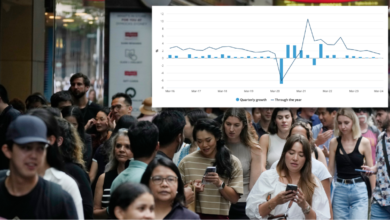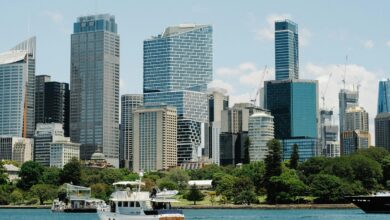Australia’s GDP figures show minimal growth, RBA governor Michele Bullock fronts Senate, Medibank at risk of record fine over cyber attack — as it happened

As usual, a very interesting and timely take on the latest GDP numbers from Indeed Asia-Pacific economist Callam Pickering.
“Population growth is the only thing standing between Australia and recession,” he writes.
Pickering notes that GDP per capita fell 1.3% over the past year, which is the weakest result in that measure in 33 years — since the early 1990s recession.
Not that, he says, the Reserve Bank will be particularly concerned by this number.
“A per capita recession, while dreadful for households, isn’t terribly relevant for monetary policy,” notes the former RBA economist.
“Inflation is primarily determined by aggregate demand, not individual demand.
“Right now household weakness has been more than offset by the formation of new households, via immigration.“
He also observes that the biggest boost to GDP growth wasn’t really a positive either.
“The biggest contributor to growth in the March quarter came from inventories, which is never a sign of economic health,” he explains.
“When inventories jump significantly it often reflects challenging moving products.”
And, while households did spend more money, a lot of that was a) simply because there were more people, and, b) on essentials.
“Household spending growth was revised upwards but overall is still very weak,” Pickering observes.
“Up 0.4% in the March quarter and just 1.3% over the past year. Faced with cost-of-living pressures, households have prioritised essentials, such as electricity, rent and food, over discretionary items.
“Households are, in other words, having less fun with their money.”
The good news for households is that compensation of employees rose 1% in the March quarter, although this was the smallest rise in two-and-a-half years as employment growth slowed.
Household disposable income was up 1.1% in the quarter and 5.2% over the past year, although inflation ate into the real size of that increase.
“Right now, the household sector remains a considerable risk to Australia’s economic outlook,” warns Pickering.
“Even a small deterioration in labour market conditions, a reduction in population growth or even a reluctance to dip into savings could quickly pull the rug out from household spending, leaving the broader economy in a precarious position.”





